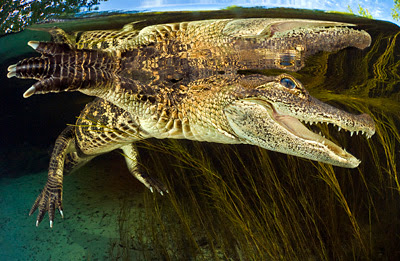
The year is almost gone. In fact, there are exactly five days left in 2007. Which means it is time to announce the SPOY winners. But before we get to the 5th-place winner, a little housekeeping is in order.
First of all, a few thoughts on the process of choosing ten winners. Amazingly not a single one of you attempted to find out how cheaply I could be bribed. (Answer:
very.) But it is too late for that now... :)
It should be noted that any one of you may well have chosen many different finalists and different winners. Very likely, ten
completely different finalists, truth be told. We all have our own internal biases, and certainly show up in something like this.
I initially narrowed down the pool to about one hundred wonderful images. Then I would go through them night after night, slowly weeding them down. There were photos which were very similar to other photos in the finals, so sometimes this was very difficult. But I wanted to avoid significant duplication within the final ten, so that became yet another criteria for thinning the pack.
Another criteria was inclusion of lighting information in the caption, or at least in the comments. Literally dozens of photos were culled using this criteria. Some of them would certainly have made the finals. But that is the primary rule of the pool, and also was one of the criteria for judging. This made a difficult choice between two otherwise great photos into an easier one.
On the process of choosing, I would again note that I winnowed the pool down to ten finalists, and
Chase Jarvis chose the five winners, in order, from the final ten. Chase would have certainly chosen a different lot of finalists -- any of us would have.
Chase's selects probably would have been more conceptual and avant guarde, whereas I tend to go for classic, and well-executed. But that's what makes the world go 'round.
I would also note that I ran my list of semi-finalists and finalists by a number of other people, looking for feedback. So, while I am sure there will be Monday-morning quarterbacking on this one (
uh, it started a while back, actually) please bear in mind the process through which the finalists were chosen.
Bell-curve-wise, we had in the finals photos taken by pros and by amateurs -- the greater numbers being with the latter. We had big lights and small lights represented -- again, the greater numbers being with the latter. And we had photos which have been very heavily viewed and commented upon right next to photos with minimal views and comments.
To those who think that many page views, favorites comments and notes is the mark of fine quality, I offer
this counterexample.
Finally, I was heartened by the fact that Chase chose from the final ten exactly the first-place winner the photo I would have chosen. There was no ranking, hinting or prodding by me. Personal biases aside, I think some photos stand out no matter who is viewing them.
So, for the next five days, I will be posting a photo a day, with commentary from Chase and myself. Please join me in both congratulating the winners and thanking the sponsors (listed below) for upping the ante to make this so interesting.
The 4th place winner is after the jump.
_____________________
4th Place: Radiant Bones - All Hallows Eve
 "Radiant Bones" was shot by Christopher Perez (AKA Smiling Monk) with a Canon 40D and a single AlienBees 800 flash.
"Radiant Bones" was shot by Christopher Perez (AKA Smiling Monk) with a Canon 40D and a single AlienBees 800 flash.
Christopher is a self-described "engineering manager by trade and a photographer by passion." His photographic website is here.
As for lighting, the flash was placed inside a 3x5-foot soft box. Then, the already-soft light was spread around the subject through the use of three large white ragboard reflectors to preserve the delicate tones of the subject and backdrop. Simple, elegant and something that could be done with a single speedlight.
Chase Said:
This gets the nod as a testament to simplicity of lighting and setup and good, simple post production. Most photographers could not resist punching the hell out of the contrast on this shot in post - thus turning this shot into something that looks like so many of it's predecessor black and white skull shots.
This avoids that standard pitfall and seeks to pave its own ground. It's is a success in its subtlety and it's beautifully toned.
I Say:
The lighting, composition and post production on this photo all elevate it from a simple still life and give it an evocative and ethereal quality. I strongly agree with Chase on the tonal restraint (in both lighting and in post) adding to the final product.
From a lighting perspective, the use of soft, multi-directional fill allowed total control over the tonal range of a subject that was essentially composed of one tone. Just because there is a full range of pure black to pure white does not mean we are required to use it.
_____________________
Congratulations, Christopher, on the photo. If you would be so kind as to place into order your prize choices from the list below and stick it into a comment on your winning photo's Flickr page, it will greatly help to speed the process of distributing prizes to the five winners after they have been announced.
Thanks again to the following sponsors for contributing such great prizes:
• An AlienBees ABR800 Ringflash, courtesy AlienBees.
• A pair of Pocket Wizard Plus II's courtesy the MAC Group, facilitated by Midwest Photo Exchange.
• Elinchrom D-Lite 2 Kit, courtesy Elinchrom and facilitated by The Flash Centre.
• Two Nikon SB-800 Speedlights, courtesy Nikon USA.
• A Canon Powershot G9 Digital Camera, courtesy Canon USA, facilitated by Midwest Photo Exchange.
_____________________
:: SPOY Results Discussion Thread on Flickr ::























